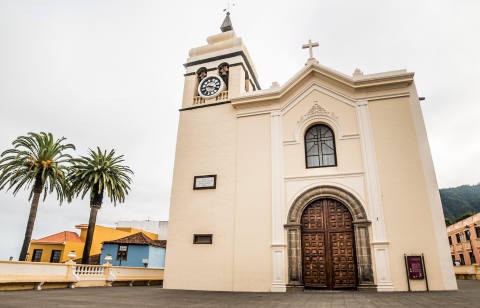13. San Juan Bautista Church

This late 17th-century church is the heart of Villa de Arriba. It was erected thanks to the work and donations of the humble inhabitants of the area who aspired to have their own parish. The limits of the new parish of Villa de Arriba resulted in confrontations over a long period of time with the parish of La Concepción. The greater the number of inhabitants assigned to a parish, the more benefits and aid that the diocese would receive. The conflict between the inhabitants of San Juan and La Concepción increased the social gap between the less affluent and the wealthy.
Inside, the ornateness of the main altar, surrounded by an 18th-century baldachin, contrasts with this temple’s sober character. The ceiling is beautifully coffered. Pay attention to the decorative geometric elements. They are typical of Mudejar, a popular architectural style in the Christian kingdoms of the Iberian Peninsula between the 12th and 16th centuries, which survived in the following centuries in the Canary Islands. This church’s “Christ tied to a column” is considered to be one of the crowning Baroque works in the Canary Islands.
If you continue along the side street, below the church you’ll find a balcony above the temple’s old crypt. If you look at the door under the balcony, you’ll see carved skulls with crowns and bishop mitres. This late 17th-century carving expresses equality in death, without social distinctions. A message with these features would have been unthinkable in La Concepción parish.
Continue straight on until you reach Calle León, where you can see a spectacular view of the old town as you head down the steep hill.
